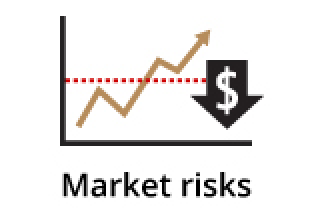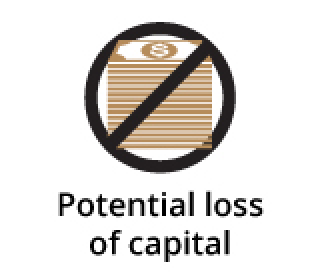Structured Notes
Improve returns with equity options
tailor-made for your risk profile
Structured Notes
Improve returns with equity options
tailor-made for your risk profile
After consulting with a DBS specialist, investors can choose the stocks and ELN yields that suit them. They then invest the principal amount at a discount, which represents the yield on the ELN.
ELNs have a “strike” price, which is at a discount to the “spot” market price, and is expressed as a percentage of the “spot”.
For example, a 95% strike means that the ELN issuer will deliver the stock to the investor when the price falls below 95% of the initial market price on maturity of the note. In other words, on maturity, the investor is delivered the stock at 95% of the initial price.
If the stock price closes at or above the “strike” level at maturity of the note, the investor gets his principal in full. The difference between the principal amount paid to the investor and the initial amount paid by the investor (that is, principal minus the discount) represents the yield on the investment.
Illustrative example of an ELN with one underlying share:
| Underlying | Company A |
| Initial price | S$16.00 |
| Strike price | S$15.20 |
| Strike level | 95% |

| Scenario | Company A Performance | At or Above Strike Level | Redemption |
|---|---|---|---|
| 1 | 105% | Yes | Initial investment + Yield |
| 2 | 92.5% | No | Principal converted to |
| 3 | 0% | No | Total loss of investment as Company A share price drops to zero |
| Investors can potentially earn enhanced returns if their selection of stocks, views on market direction and choice of structured payoff are accurate. In general terms, the yield depends on the level of risk assumed by the investor. Yields are generally lower for less aggressive strike levels and for stocks with lower implied volatilities. |
|
Investors may be able to purchase shares at their target levels, below the current market prices, while earning an enhanced yield during the tenor of the ELN. |
| Changes in factors such as price of the underlying shares, interest rates, time to maturity of the ELN, implied volatility of the shares, and implied correlations of the underlying shares. These can be unpredictable, sudden and large. Such changes may result in the price or value of the ELNs moving adversely against an investor. |
|
ELNs are issued by financial institutions and investors are exposed to the credit risk of the issuer. |
|
Investors may lose their entire capital if the underlying share price drops to zero. |
To understand the product-related terms, visit our Glossary.
Disclaimer for Investment Products
Call
From overseas: +65 6222 2200
In Singapore: 1800 222 2200
Operating hours: 8.30am to 8.30pm, Mon - Fri (excluding PH)








